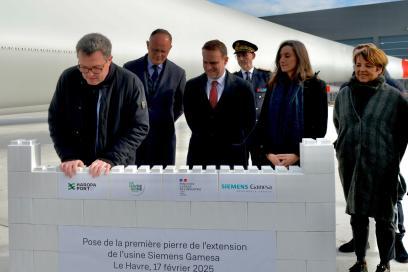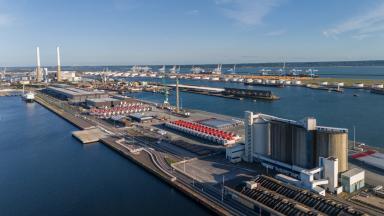- ABOUT US
- GOODS
- A multi-sector focus
- A maritime service offering in the first rank
- An attractive multimodal offering
- An expanded shortsea service offering
- Terminaux portuaires et quais à usage partagé
- High-quality ship services
- Fluid, facilitated goods throughput
- A port that puts its performance figures in the public domain
- PASSENGERS
- MULTIMODALITY
- ECOLOGICAL TRANSITION
- INNOVATION
A strategic industrial facility
Scheduled to open in 2022, the Siemens Gamesa plant in Le Havre is located on a 36-hectare site within the industrial port zone, between the Bellot and Théophile Ducrocq docks, on the HAROPA PORT estate.
With two 200-metre quays - a Jack-up quay designed to accommodate ships loading heavy components and a Lo-Lo quay for importing and exporting parts - the site produces and ships offshore wind turbine blades and nacelles.
An extension to serve the new generation of wind turbines
The factory extension project involves adding 12,700 m² of floor space, bringing the total surface area to almost 80,000 m². The expansion is designed to accommodate the production of 115-metre blades for new-generation offshore wind turbines, each with a rated output of 14 MW.
HAROPA PORT, a committed player in the energy transition and support for the offshore wind industry
The Siemens Gamesa extension is fully in line with HAROPA PORT's development strategy, which supports the growth of promising sectors in the region and makes an active contribution to France's energy mix.
As a reminder, HAROPA PORT invested €183 million to support the plant's commissioning, including €92 million for the two quays, €48 million for land consolidation, networks and access, and €43 million for the structuring of the platforms.
The port continues to support the development of the industry, by providing handling and warehouse space for components such as blades: to date, some 30 ha of quayside have been dedicated to this activity.

